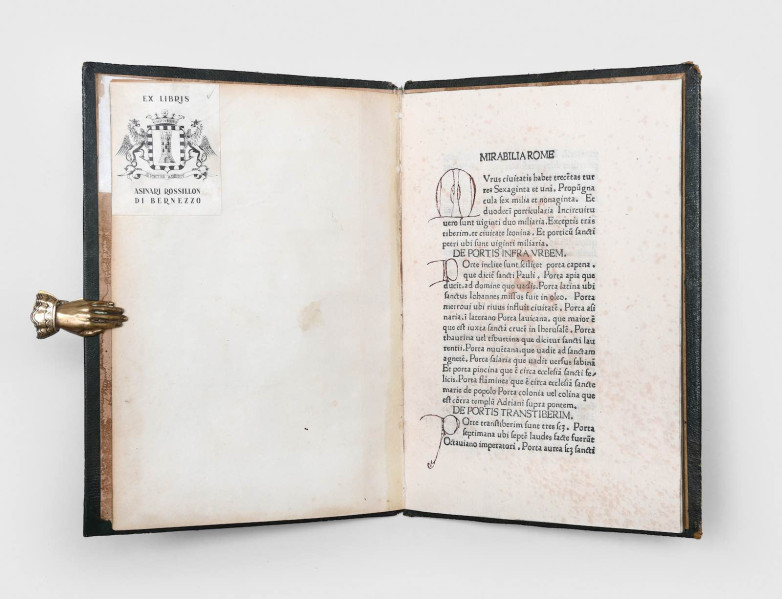Mirabilia Romae: Rare Book of the Week

Mirabilia Romae
This week's Rare Book of the Week comes from The Age of Exploration, the third and final catalogue from the David Parsons collection, recently launched as a joint offering by Peter Harrington, the New Haven-based William Reese Company and James Cummins Bookseller of New York, in association with Australia’s Hordern House.
Parsons first began assembling his collection of rare books charting the earliest Spanish push towards the Americas in the West, and the earliest Portuguese voyages to the East, which were covered in the two preceding catalogues launched earlier this year. This catalogue includes items that do not fit neatly into those categoies, though they all have some relation to the age of exploration.
Mirabilia Romae (1475) is a rare incunable edition of the earliest European printed guidebook, a geographically arranged inventory of the musts-see sites of Rome. This copy was handsomely bound in green morocco for the library of Prince Ferdinando of Savoy, first duke of Genoa, with his coat of arms and initials in gilt on the covers. This is one of the earliest known editions.
Prince Ferdinando Maria Alberto of Savoy (1822-1855), founder of the Genoa branch of the House of Savoy, owned a substantial library, mostly focused on military books. This copy has the prince’s ownership label and his library stamp on the rear free endpaper. It also features the early 20th-century bookplate of a member of the Asinari di Rossillon family of Bernezzo, probably Giuseppe Mario (1878-1943), marquis of Bernezzo, and army general and first aide-de-camp to King Emanuele II.
The Incunabula Short Title Catalogue lists eight editions believed printed in the 1470s. All are exceedingly rare, and only two of the eight editions have appeared in commerce in modern times. This edition is assigned to the printer Giovanni de Reno, active in Sant’Orso (Valle d’Aosta, Italy), on the basis of the type and watermark.
Memorably described by Printing and the Mind of Man (PMM) as the “Renaissance Baedecker”, Mirabilia Romae (“The marvels of Rome”) was composed about 1140-50 by an anonymous writer, sometimes identified as Benedict, Canon of
St Peter’s, as a guide for the pilgrims to the city. First printed in the early 1470s, it was reprinted multiple times over the following century, and translated into Italian, English, Spanish, and German. It has a sale price of £60,000.















